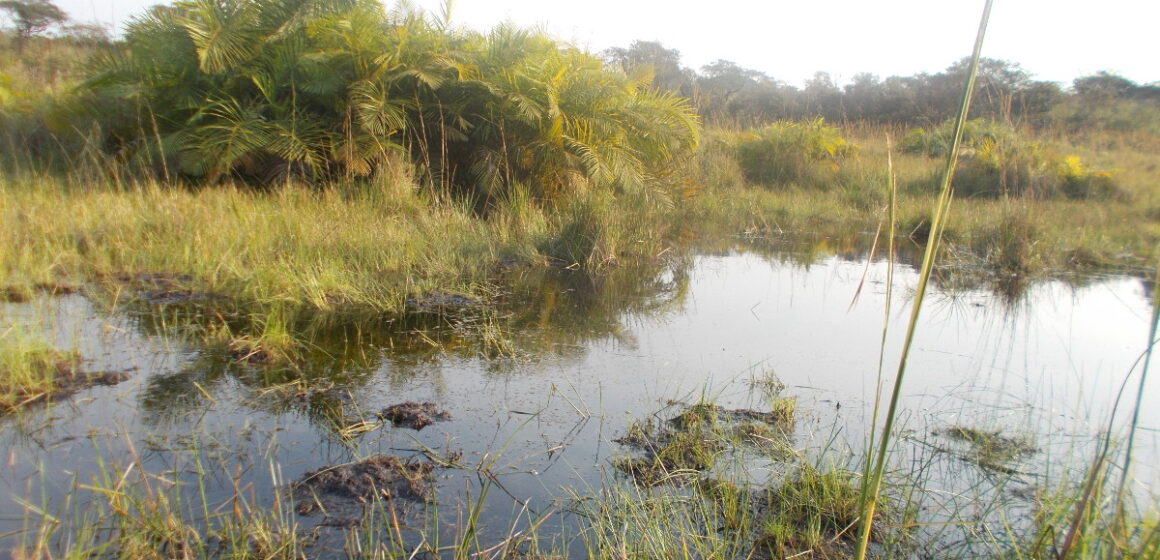Résumé
Les Forêts Communales classées dans le Domaine Forestier Permanent constituent un mode de gestion durable des forêts au Cameroun. La Forêt Communale de Ngame-Ndom-Nyanon qui fait partie de ce grand ensemble a bénéficié de l’appui du projet GCP/CMR/033/GFF intitulé «Gestion durable des forêts sous l’autorité des communes Camerounaises » en collaboration avec le gouvernement du Cameroun (MINEPDED, MINFOF) et l’Association des Communes Forestières du Cameroun (ACFCAM/CTFC) mis en œuvre par l’Organisation des Nations Unies pour l’Alimentation et l’Agriculture (FAO). C’est dans ce cadre que le présent travail a été exécuté avec pour objectif principal de caractériser les habitats et réaliser un inventaire de la flore et de la faune dans la FC de Ngambe-Ndom-Nyanon. Plus spécifiquement, il s’agissait d’évaluer la diversité floristique et faunique; de caractériser les principaux habitats rencontrés dans cette forêt ; d’identifier les zones propices pour la conservation de la biodiversité et de produire des fiches techniques de collecte des données floristique et fauniques pour le suivi de la flore et de la faune.
Pour y parvenir, la méthode des transect linéaire a été utilisée pour la collecte des données suivant un plan de sondage d’un taux de 0,9% dans des unités de comptage de 250x20m soit 0,5 ha pour la flore et 2kmx2km soit 4 km² pour la faune. Dans chaque unité de comptage, les données sur la topographie, la végétation, le sous-bois et la canopée ont été collectées pour la description des habitats. Pour l’inventaire de la flore, une parcelle floristique de dimensions 20x5m soit 0,01ha était délimitée au début de chaque Unité de comptage. A l’intérieur de cette sous-parcelle, tous les arbres y compris les herbacées étaient comptés. Dans le reste de l’unité de comptage, seuls les PFNL étaient recensés. Les données collectées ont été analysées à l’aide des logiciels MsExcel et QGIS.
Les principaux résultats montre que : la flore de la FCNNN est bien diversifiée avec 360 espèces 278 genres et 88 familles incluant deux espèces d’arbres menacées en Danger Critique Microberlinia bisulcata (CR) et Autranella congolensis (CR) selon l’UICN ; la FCNNN regorge 33 PFNL d’origine végétale majoritairement à usage alimentaire et médicinale parmi lesquels seulement 8 font l’objet d’une exploitation à but commercial dans la localité (Njansang (Ricinodendron heudelotii), Kola (Cola acuminata), Onie (Garcina cola), Noisette (Coula edulis), Okok (Gnetum africana), Bongo (Afromonum sp), Andok (Irvingia gabonensis) et le palmier à huile (Elaïs guinensis)) ; la diversité faunique est relativement faible et comprend 20 espèces dont 15 mammifères, trois oiseaux, un reptile et un amphibien avec 2 espèces (Pan troglodytes et Gorilla gorilla) qui sont en Danger Critique (CR) et 3 espèces en Danger (EN) dont Smutsia gigantea, Phataginus tricuspis et Psittacus erithacus ; la FCNN présente essentiellement deux types de couverture végétale majeurs : les Forêts Secondaires Adultes et les Forêts Secondaires Jeunes dans les proportions 81% et 18% respectivement constituant l’essentiel des habitats de la grande faune ; une zone de 2017 ha est proposée pour la série de conservation de la biodiversité dans cette forêt.
Mots clés : Forêt Communale de Ngambe-Ndom-Nyanon ; diversité floristique ; diversité faunique ; type de couverture végétale.
Abstract
The Communal Forests classified in the Permanent Forest Estate constitute a mode of sustainable forest management in Cameroon. The Communal Forest of Ngame-Ndom-Nyanon, which is part of this large group, has benefited from the support of the GCP/CMR/033/GFF project entitled “Sustainable management of forests under the authority of Cameroonian communes” in collaboration with the government of Cameroon (MINEPDED, MINFOF) and the Association of Forest Communes of Cameroon (ACFCAM/CTFC) implemented by the Food and Agriculture Organization of the United Nations (FAO). It is within this framework that this work was carried out with the main objective of characterizing the habitats and carrying out an inventory of the flora and fauna in the CF of Ngambe-Ndom-Nyanon. More specifically, it was a question of evaluating the floristic and faunal diversity; to characterize the main habitats found in this forest; to identify favorable areas for the conservation of biodiversity and to produce technical sheets for the collection of flora and fauna data for their monitoring.
To achieve this, the method of linear transects was used for data collection following a sampling plan with a rate of 0.92% in counting units of 250x20m or 0.5 ha for the flora and 2kmx2km or 4 km² for wildlife. In each counting unit, data on topography, vegetation, undergrowth and canopy were collected for the description of habitats. For the inventory of the flora, a floristic parcel of dimensions 20x5m or 0.01ha was delimited at the beginning of each Counting Unit. Inside this sub-plot, all the trees including grasses were counted. In the rest of the Counting Unit, only NWFPs were counted. The data collected was analyzed using MsExcel and QGIS software.
The main results show that: the flora of the FCNNN is diversified with 360 species, 278 genera and 88 families including two critically endangered tree species Microberlinia bisulcata (CR) and Autranella congolensis (CR) according to the IUCN; the FCNNN contains 33 NWFPs of plant origin mainly for food and medicinal use, of which only 8 are exploited for commercial purposes in the locality (Njansang (Ricinodendron heudelotii), Kola (Cola acuminata), Onie (Garcina cola), Hazelnut (Coula edulis), Okok (Gnetum africana), Bongo (Afromonum sp), Andok (Irvingia gabonensis) and oil palm (Elaïs guinensis); faunal diversity is relatively low and includes 20 species including 15 mammals, three birds, one reptile and one amphibian with 2 species (Pan troglodytes and Gorilla gorilla) which are Critically Endangered (CR) and 3 Endangered species (EN) including Smutsia gigantea, Phataginus tricuspis and Psittacus erithacus; the FCNNN essentially has 2 major types of vegetation cover: Old Secondary Forests and Young Secondary Forests in the proportions of 81% and 18% respectively, constituting the essential habitats of large fauna; an area of 2017 ha is proposed for the biodiversity conservation series in this forest.
Keywords: Communal Forest of Ngambe-Ndom-Nyanon; floristic diversity; wildlife diversity; type of vegetation cover and biodiversity conservation
inventaire de la biodiversité FC Ngambe_Validé
